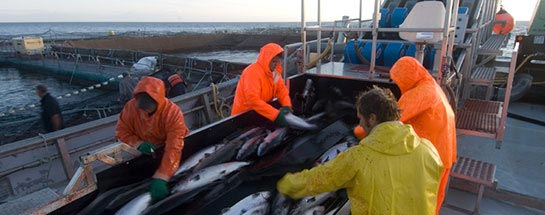“Unprecedented prices” for salmon spurred by strong demand and reduced supplies propelled a 77% increase in quarterly earnings for the Marine Harvest Group to an all-time high of EUR 149 million. Operational revenues in the second quarter of 2016 totaled EUR 832 million, compared with EUR 767 million during the like period the year before. Volume declined 16% to approximately 87 million tons.
The Bergen, Norway-headquartered company anticipates harvesting upwards of 400,000 metric tons of farmed salmon this year, which, if it comes to pass, will amount to 14,000 tons less than the total crop in 2015.
Farming results in Norway and Canada thus far, considering the high contract share, have been very encouraging. Meanwhile, the market balance for 2016 is expected to remain tight, said CEO Alf-Helge Aarskog, who is forecasting a global supply decline of 7%.

Salmon of Norwegian origin achieved an operational EBIT per kilo of EUR 2.12 in the second quarter (up dramatically from EUR 1.22 the year before), while salmon of Scottish and Canadian origin reported operational EBIT per kilo of EUR 0.47 and EUR 2.34, respectively (compared with EUR 0.64 and EUR 0.26 during the second quarter of 2015). Salmon of Chilean origin generated operational EBIT per kilo of EUR -0.23 in the quarter (compared with EUR -0.53 the previous year).
The figures include contribution from sales and marketing, including MH Consumer Products, which reported an operational EBIT of EUR -4.8 million (compared with EUR 5.5 million during the second quarter of 2015). MH Feed reported an operational EBIT of EUR 3.3 million.
“Despite record high salmon prices, farming costs have become unacceptably high and the cost trend is not satisfactory,” said Aarskog. “Compared to the second quarter of 2015, costs are up in all regions. Marine Harvest continues to have the utmost focus on cost reduction throughout the organization and supports new methods and innovative solutions to combat the cost escalation.”





